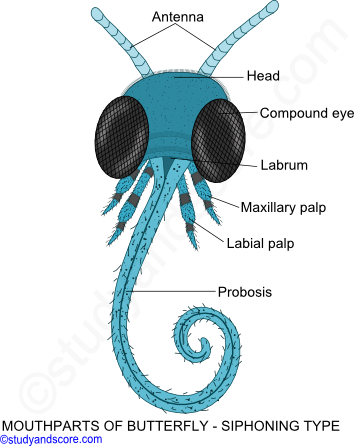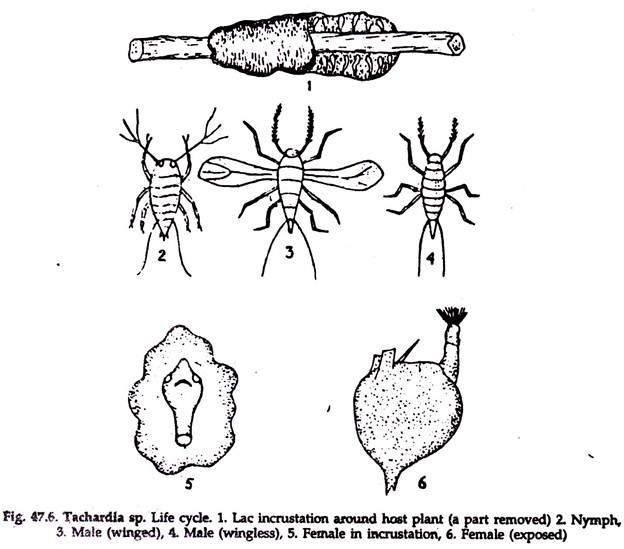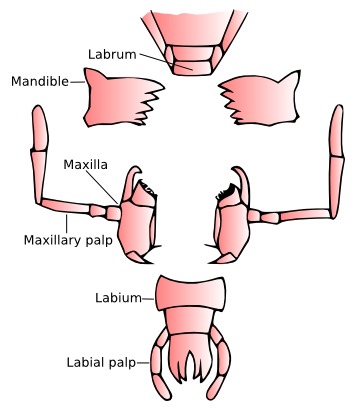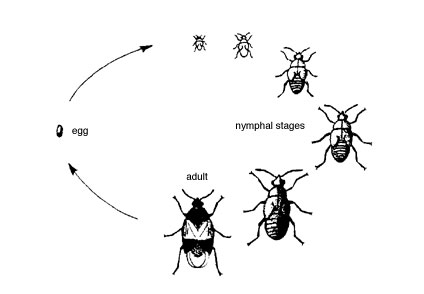55 Awesome Mouthparts Of Insects Biology Discussion
Mouthparts of insects biology discussion You are likely familiar with many insect characteristics. Insects are a group of invertebrate animals and it is an extremely broad and diverse group.
 Mouthparts Butterfly Cockroach Housefly Honey Bee Mosquito Study Score
Mouthparts Butterfly Cockroach Housefly Honey Bee Mosquito Study Score
Insects are a group of invertebrates belonging to the phylum Arthropoda.

Mouthparts of insects biology discussion. Give students an assortment of adult insects that have different types of mouthparts. This type of mouth parts are supposed to be the most primitive type as the other types are believed to be evolved from biting. Labrum mandibles maxillae labium and hypopharynx. Mouthparts of insects biology discussion
Some of todays more. But regardless of function all mouthparts are constructed from the same five building blocks. The labrum is similar to an upper lip. Mouthparts of insects biology discussion
Mouth Parts in Insects With Diagram 1. Then launch the Mouthparts Tutorial click below to view an interactive lesson that allows you to compare a grasshoppers mouthparts with those of a ground beetle dragonfly naiad honey bee true bug mosquito blow fly and moth. The mouthparts of humans consist of five layers or horizons. Mouthparts of insects biology discussion
Three physical features separate insects from other arthropods. The mouthparts of insects are structures surrounding the mouth that are involved in the mechanics of feeding and processing and manipulating the food so that it can be ingested. Insect morphology is the study and description of the physical form of insectsThe terminology used to describe insects is similar to that used for other arthropods due to their shared evolutionary history. Mouthparts of insects biology discussion
In this page the individual mouthparts are introduced for. In winged insects the adult differs in several respects from the young such insects are said to undergo metamorphosis in becoming adults. The earliest insects had chewing mouthparts. Mouthparts of insects biology discussion
There are different types of mouthparts out of that biting and chewing type is the oldest. Additionally all true insects have. The strongest muscles in the head serve the mandibles in chewing insects and the sucking pump in piercing-sucking insects. Mouthparts of insects biology discussion
The most significant aspect of this group is the presence of paired appendages. As insects evolved to feed on a wider variety of food resources their mouthparts. Visit the Mouthparts page in BugBytes to learn about the differences between mandibulate and haustellate mouthparts. Mouthparts of insects biology discussion
For example grasshoppers or caterpillars chewing mouthparts houseflies sponging mouthparts mosquitoes or stink bugs piercing-sucking mouthparts butterflies siphoning mouthparts bees chewing-lapping mouthparts or horseflies rasping mouthparts. There are five basic components that form these mouthparts. The most ancestral mouthparts and those which has also suffered less adaptive modification are the mandibulate or chewing ones. Mouthparts of insects biology discussion
This is a model of a cicada head. Mandibulate Mouthparts In all primitive insects the mouthparts are adapted for grinding chewing pinching or crushing bits of solid food. The thorax provides structural support for the legs three pairs and if present for one or two pairs of wings. Mouthparts of insects biology discussion
Upper lip upper jaw tongue lower jaw lower lip. Hello students in this lecture you gain knowledge about Entomology and Mouth parts of Insects with examples by profsagheer Ahmed UrduHindi. This is a model of a cicada head. Mouthparts of insects biology discussion
Although functionally equivalent to the jaws of vertebrates they lie outside the mouth not within a buccal cavity. Mouthparts of insects or Ectognatha Both mouthparts diversification and feeding diversification are the result of a long evolutionary process. So its expected that there exist ancestral and derived feeding structures. Mouthparts of insects biology discussion
The mouthparts of insects are used for feeding. Some sucking mouthparts are like the turkey baster but most sucking mouthparts are not simply tubes. Six or seven segments are condensed to form the head capsule. Mouthparts of insects biology discussion
The insect head can be found in the mouthpart module. Insects have a range of mouthparts adapted to particular modes of feeding. This strong structure provides protection for the brain support for eyes ocelli antennae and mouthparts. Mouthparts of insects biology discussion
Piercingsucking Mouthparts - called a Proboscis A large group of insects such as mosquitoes stink bugs and cicadas have mouthparts like tubes that pierce into their food source and suck up the juices. Insect mouthparts have evolved for chewing beetles caterpillars piercing-sucking aphids bugs sponging flies siphoning moths rasping-sucking thrips cutting-sponging biting flies and chewing-lapping wasps. Entomology is the branch of biology that deals with the study of insects. Mouthparts of insects biology discussion
In all primitive insects the mouthparts are adapted for grinding chewing pinching or. They have six legs two antennae three body parts a head thorax and abdomen and an exoskeleton. Piercingsucking Mouthparts - called a Proboscis A large group of insects such as mosquitoes stink bugs and cicadas have mouthparts like tubes that pierce into their food source and suck up the juices. Mouthparts of insects biology discussion
Specialization has mostly been for piercing and sucking although a range of specializations exist as these modes of feeding have evolved a number of times for example mosquitoes and aphids which are true bugs both pierce and suck however female mosquitoes feed on animal blood whereas aphids feed on plant fluids. They have a body divided into three regions head thorax and abdomen have three pairs of legs and mouthparts located. The nymph which hatches from the egg has a general resemblance to the adult in body form type of mouth parts and possession of compound eyes though these nymphs may have adaptations associated with their particular habits of being aquatic swimming or. Mouthparts of insects biology discussion
These are known as mandibulate mouthparts because they feature prominent chewing mandibles. Insect mouthparts also consist of five horizons and are made of appendages that have been modified for food handling see General Mouthparts right. Some sucking mouthparts are like the turkey baster but most sucking mouthparts are not simply tubes. Mouthparts of insects biology discussion
It is not divided but may have a notch on the outer distal edge. Mouthparts of insects biology discussion
 Crustaceans Myriapods Insects And Chelicerates
Crustaceans Myriapods Insects And Chelicerates
 A Biomechanical Analysis Of Prognathous And Orthognathous Insect Head Capsules Evidence For A Many To One Mapping Of Form To Function Blanke 2018 Journal Of Evolutionary Biology Wiley Online Library
A Biomechanical Analysis Of Prognathous And Orthognathous Insect Head Capsules Evidence For A Many To One Mapping Of Form To Function Blanke 2018 Journal Of Evolutionary Biology Wiley Online Library
 Head And Mouth Parts Of Housefly Zoology
Head And Mouth Parts Of Housefly Zoology
 Biological Drawings Honey Bee Apis Mellifera Mouthparts 1 Biology Teaching Bee Honey Bee Drawings
Biological Drawings Honey Bee Apis Mellifera Mouthparts 1 Biology Teaching Bee Honey Bee Drawings
 Lac Culture Of Insects Zoology
Lac Culture Of Insects Zoology
 Weekend Science Fun Insect Mouthparts Growing With Science Blog
Weekend Science Fun Insect Mouthparts Growing With Science Blog
 Gardening Handbook Types Of Insect Metamorphosis
Gardening Handbook Types Of Insect Metamorphosis
 Insect Mouthparts An Overview Sciencedirect Topics
Insect Mouthparts An Overview Sciencedirect Topics
 Insect Mouthparts Amateur Entomologists Society Aes
Insect Mouthparts Amateur Entomologists Society Aes
 Advertisements Mouth Parts In Insects 1 Biting And Chewing This Type Of Mouth Parts Are Supposed To Be The Most Primitive Typ In 2021 Insects Bears Tooth Lower Lip
Advertisements Mouth Parts In Insects 1 Biting And Chewing This Type Of Mouth Parts Are Supposed To Be The Most Primitive Typ In 2021 Insects Bears Tooth Lower Lip
 Honeybee Head And Its Appendages Dorsal View Honeybee Mouth Parts Honey Bee Bee Honey
Honeybee Head And Its Appendages Dorsal View Honeybee Mouth Parts Honey Bee Bee Honey
 Mouthparts An Overview Sciencedirect Topics
Mouthparts An Overview Sciencedirect Topics
 Cockroach Morphology And Anatomy Of Cockroach Questions Videos
Cockroach Morphology And Anatomy Of Cockroach Questions Videos
 Insect Mouth Parts Types Diagram Video Lesson Transcript Study Com
Insect Mouth Parts Types Diagram Video Lesson Transcript Study Com
 Mouthparts Ent 425 General Entomology
Mouthparts Ent 425 General Entomology
 Structure And Life Cycle Of Mosquito With Diagram
Structure And Life Cycle Of Mosquito With Diagram



